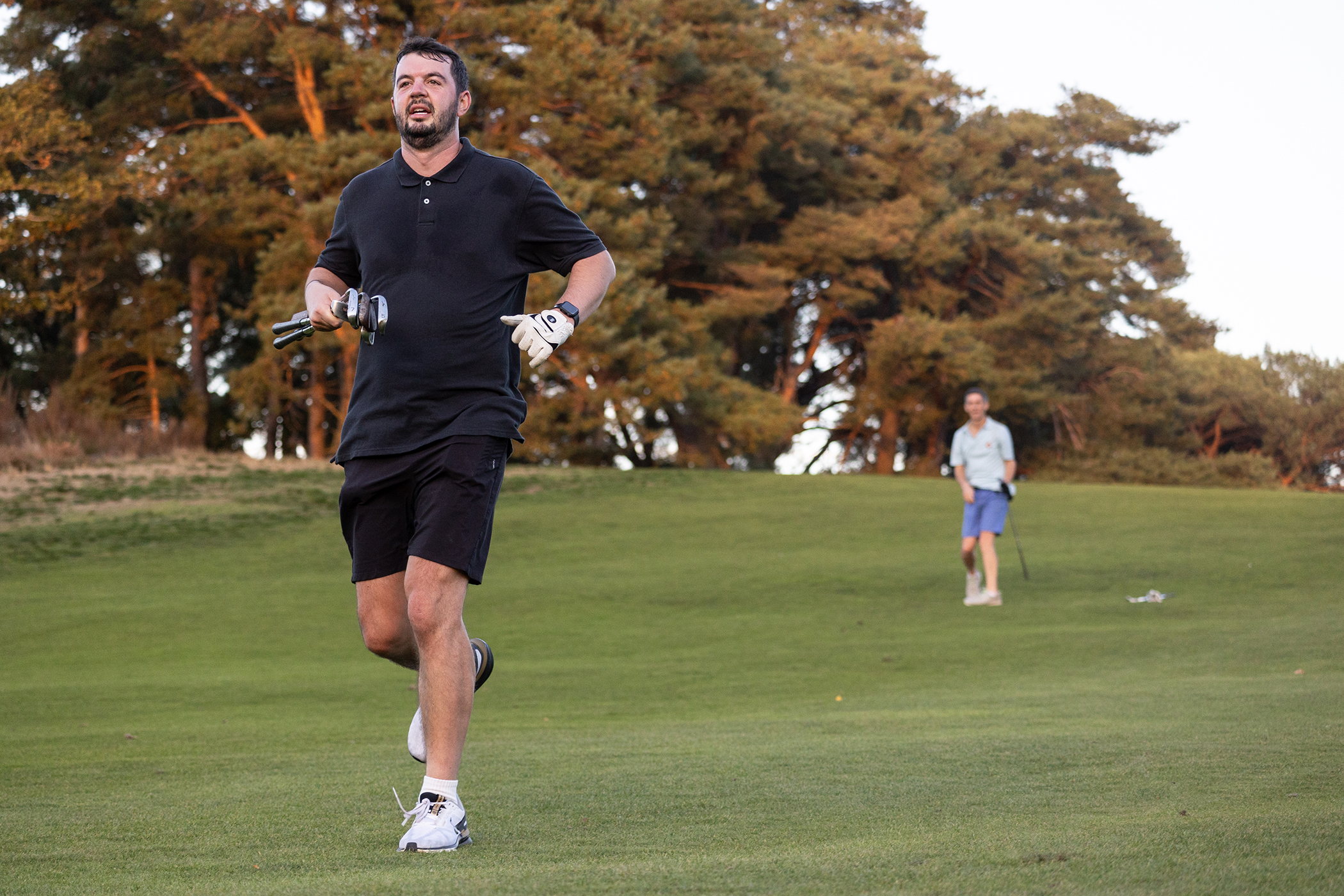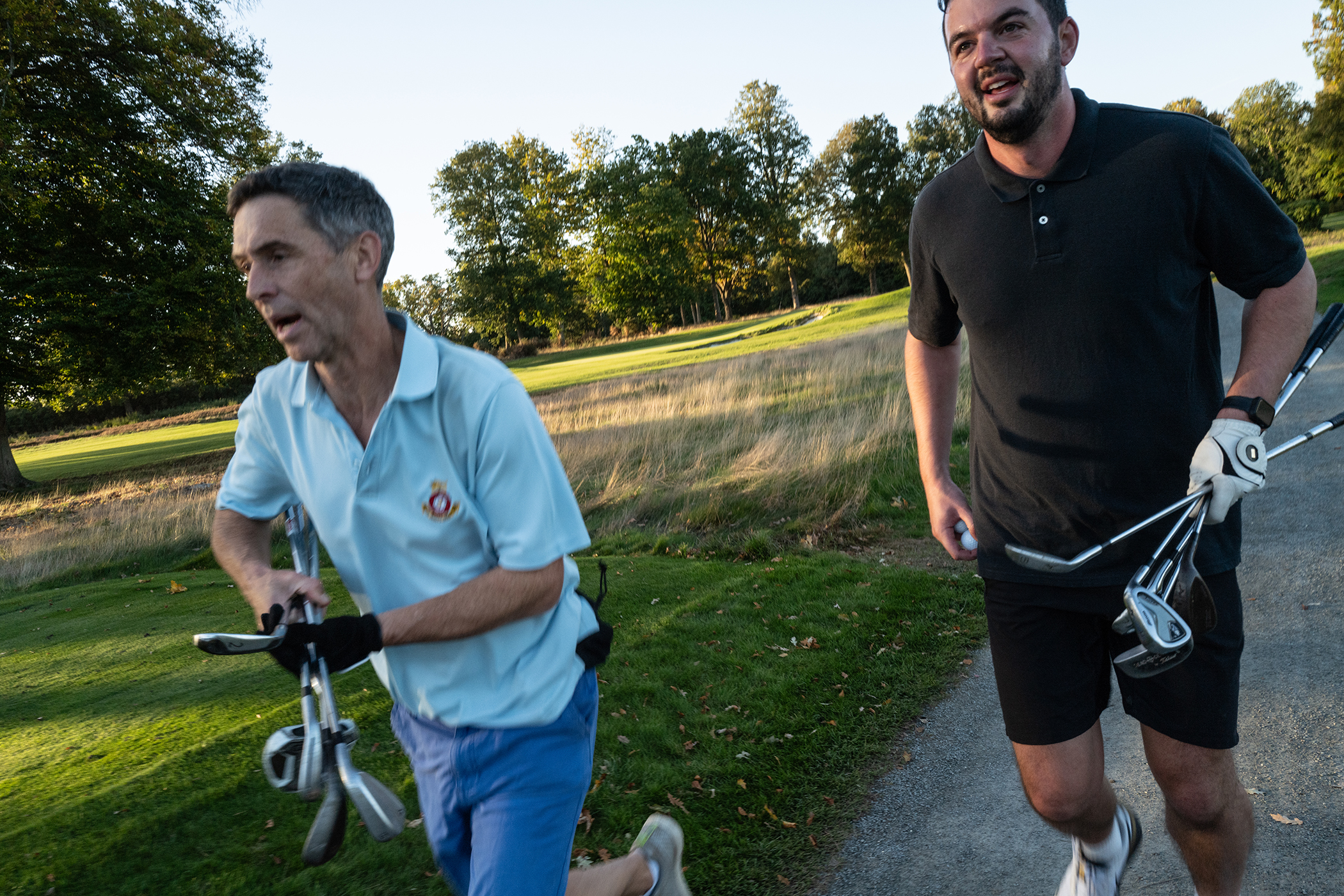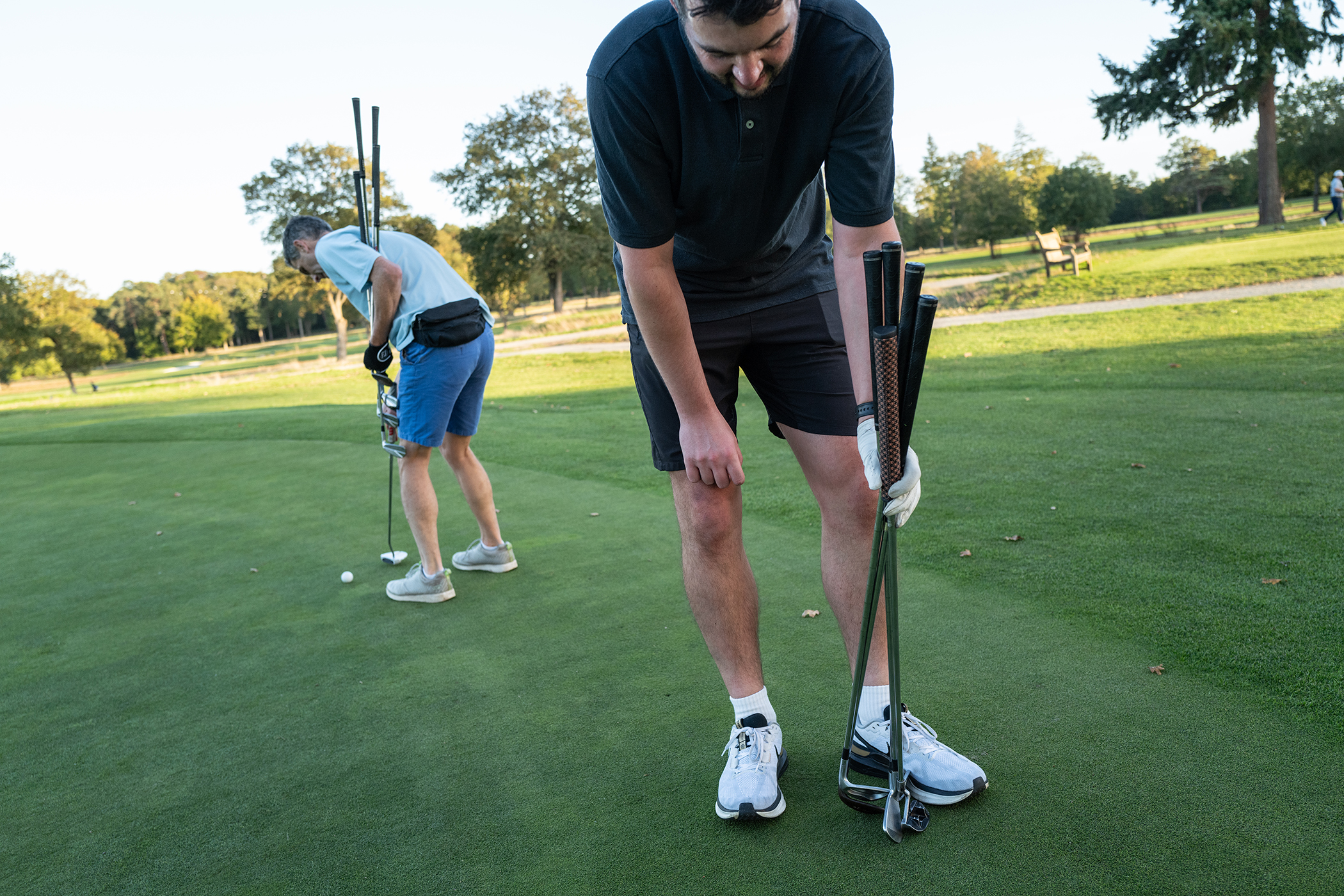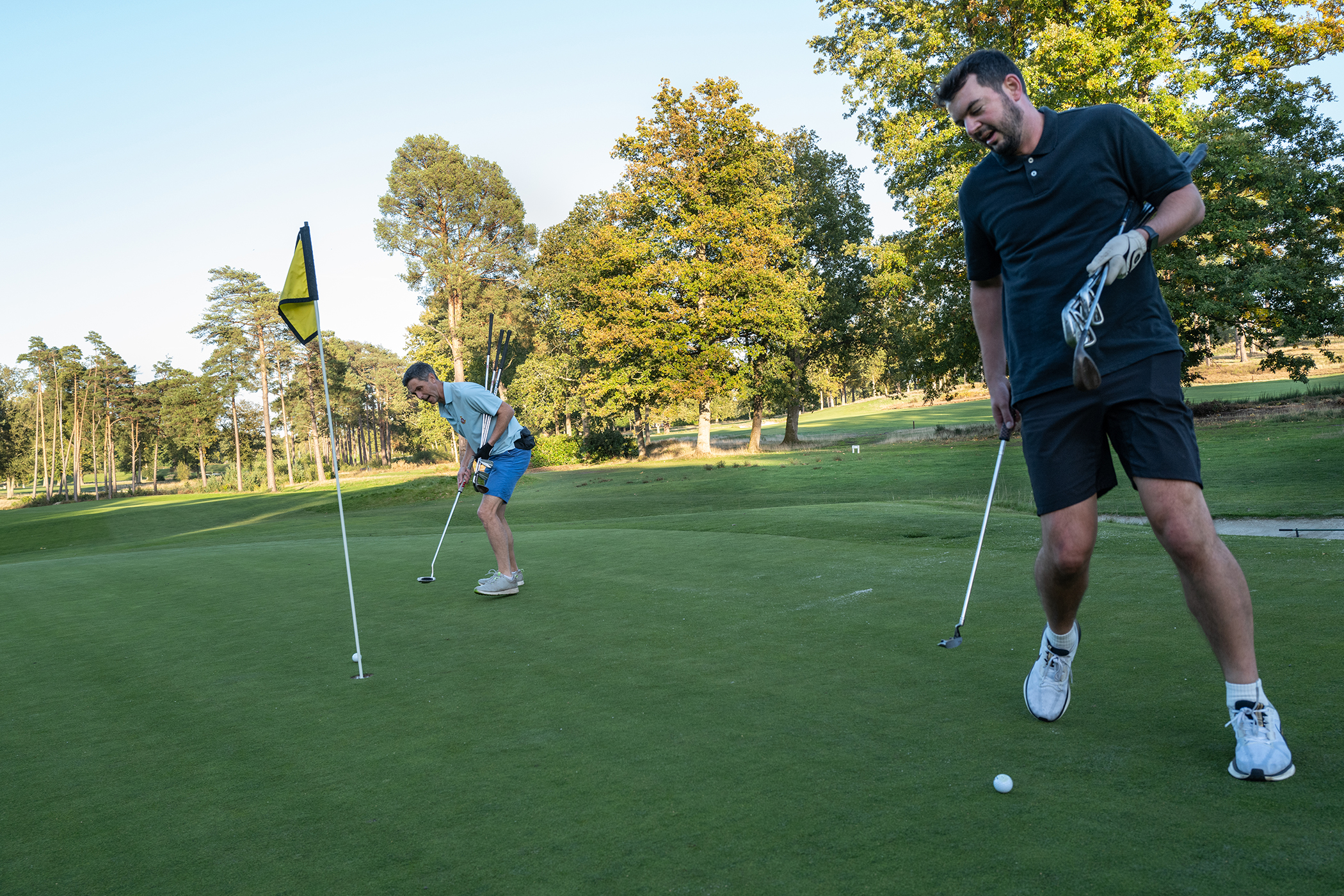The first-tee nerves began two weeks before – via email. “9 holes. Should take 30 mins max,” it read. It was from Adam Williams, the UK senior speedgolf champion.
The clue is in the name. Speedgolf means getting round the course as quickly, not to mention in as few strokes, as possible. That means playing your shot, then running to your next, playing your shot, running, shot, run, ad infinitum. Your final score is your number of strokes added to your time – so if you went round in 70 strokes in 50 minutes, your total score would be 120.
But this was me, an average golfer and OK runner, being told it would only take half an hour to get round nine holes. The average nine holes two-ball in ‘normal’ golf usually takes more than 90 minutes.

There are major differences between ‘normal’ golf and speedgolf. Players carry a maximum of seven clubs in their hand rather than lumbering around with a bag, though some have developed a special holster to accommodate their clubs. To save valuable seconds, players putt one-handed while holding the other clubs under the opposite armpit. Teeing the ball up each hole isn’t a complete necessity, and there is no taking time searching for a lost ball in heavy rough – you simply replace the ball immediately and take the one-shot penalty (equivalent to a minute in time).
So here we were, on the first tee at North Hants Golf Club, on a glorious autumnal afternoon, with nine holes and four kilometres of running in front of me with a target time of half an hour – armed with just five clubs I’d elected to take out with me – my five, seven, and nine irons, a 52-degree wedge and putter.
“Breathe, and just focus on a clean connection,” said Adam as I led off proceedings.
The first hole went surprisingly well. A 197-yard par three was navigated reasonably – bogeyed, in around three minutes. The second hole presented a tougher challenge – a 406-yard par four. Off course, I found myself in the rough behind a huge tree approaching the green. By the end of the third hole, I was exhausted. A 527-yard uphill par five had seen my heart rate rocket to 180 beats per minute, and my putting was disturbed by sweat falling into my eyeballs. The prospect of six more holes seemed unsustainable.

Starting in 1979, speedgolf has seen its popularity accelerate, finding an audience inside and outside the ‘normal’ golf fraternity. The inaugural British championships were held in 2014, and the sport’s global governing body, the International Speedgolf Alliance (ISGA) was formed four years later. In 2024, the R&A officially began supporting the version of the sport through sponsorship of the British Championships.
“I just love doing things a bit different,” said Adam, who can neatly fit in a sub-hour 18 holes around his day job as headteacher at Lord Wandsworth College.
“I’ve always loved golf, but this has reignited that passion even more. I just found this really cool community of people who love playing quick golf.”
As we ran to the fourth tee, I noticed something. I haven’t really thought about any shots I had played so far. The golfer’s mind is often the “enemy”, as Dr Joseph Parent notes in his book Zen Golf. Intrusive thoughts ranging from hoping not to slice the next shot through to a regretful thing you said 20 years ago can interrupt any golfer on their backswing.
Amazingly, the distraction of the high heart rate and the breathlessness of the first three holes rid me of over-thinking. The pace of the game – and having an additional goal of time and not just strokes played – eased my swing, and liberated my play. I made a par on the generous 290-yard par four, and bogey the fifth.

“If you feel your heart rate start pounding a little bit, that’s good news. That tells you that your body is in the optimal state to perform,” Luke Willett tells me later. Willett is a PGA Pro, and the fastest speedgolf player on the planet. He set a new world record last year for the fastest 18-hole round of golf in a staggering time of 36 mins 4 secs at Missouri’s 6,312-yard par 70 Horton Smith Golf Course.
“The one thing that I used to always be thinking about as a professional golfer was stroke score, and the one thing that I did not think about once when I started speed golfing was score,” he added.
“The reason why I fell in love with speedgolf is because I found myself growing as an individual. It was a rush when I was doing that, because all of a sudden I was like a kid again.”

Both holes six and seven were bogeyed, but I felt that boyish enthusiasm as we approached hole eight. “I call this the 45-second hole, to try and complete the hole in that time,” said Adam. Challenge accepted. What lay ahead was a 115-yard par three, but the idea of finishing it in under a minute seemed fanciful.
Then, a miracle. A three-quarter swing nine-iron sees the ball soaring high, hold its line, and land four feet from the pin. There was no time to admire the shot, as I raced to the hole. After agonisingly leaving the first putt short (some things never change), a par was secured… in 45 seconds.
The finish line was in sight. I was still exhausted, but the adrenaline of the previous hole made it significantly easier. The round was completed in around 45 minutes, nine over par, an altogether reasonable first-time effort.

The aim in the long run is to see speedgolf in the Olympics. There are parallels of the Winter Olympic biathlon – skiing, then shooting – to it, and a sped up version of an existing sport makes a compelling spectacle. There are still “healthy tensions”, as one speedgolf player said, around ‘normal’ golfing etiquette and clothing, as most speed golfers wear running gear as opposed to traditional golf attire, and fitting in speedgolf-only tee times (with intervals every 4-5 minutes rather than the standard 8-10 minutes) at most clubs are a rarity.
But as trends have shifted towards snappier versions of sport, don’t be surprised to see some club-carrying, one-handed putting, heavily-sweating players the next time you’re out on the course.
Photographs by Andy Hall for The Observer

